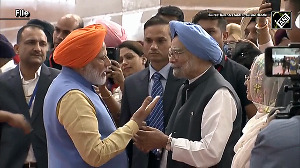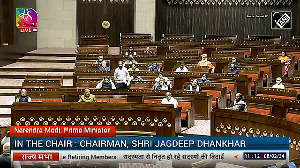National highways in India have seen a dramatic improvement over the last decade. Improvements are more evident in shorter stretches. For instance, Jaipur, Chandigarh and Agra are now well-connected with Delhi. Similarly, the highway that connects Mumbai with Pune can easily compare with the best anywhere in the world. This is true of many other national highways connecting major cities in southern and eastern India.
Many of these roads can be used only on payment of toll charges. Going by the available statistics on toll collections, these roads have become the preferred option for motorists and even heavy vehicle drivers. In fact, the toll charges are quite low compared to the benefits they offer to the road users. There is a clear case for raising these toll charges so that the maintenance of the roads can be ensured without any funds constraint. Not surprisingly, the National Highway Authority of India is planning to build more such toll roads connecting different cities across the country.
Yet, better highways have not led to a reduction in the total travelling time. This is ironical. If you are travelling from Jaipur to Delhi, you will take at least 45 minutes to an hour to cover a distance of about 10 kilometres within the city before reaching the national highway. Once on the highway, the journey is smooth and fast with about 250 kilometres being covered in about three and a half hours.
The problem starts again once you are about to enter the city of Delhi. And depending on your final destination point, this might mean an additional travel time of a couple of hours. It is the same story if you were to travel by road from Chandigarh to Delhi.
So, national highways have made driving easy once you get out of the city. But to reach a destination, you need to travel through the city. And the bottleneck is at the entry point of the city. Nothing much has been done in any of these cities to decongest the arterial access roads. The city of Delhi may have seen more flyovers in the last few years, but the impact has been marginal because the growth in the vehicular population in the city has also been phenomenal.
Airlines should have gained from this increasing vehicular congestion at the entry points of all cities. But pause for a moment to reflect on what is happening to airport congestions in almost all the major cities, you will notice a virtual re-run of what has already happened to Indian highways. The flying time between Delhi and Mumbai is only about an hour and a half. But the wait on the tarmac (in addition to the early check-in requirements because of security reasons) before the aircraft can take off is almost half an hour.
There is another 30-45 minutes of hovering in the skies before the aircraft can actually land and you can be taken to the arrival terminal building. In effect, you end up waiting for almost the same time that you take to cover the actual distance. All this is due to airport congestion. Gone are the days when once you were airborne, you could confidently estimate the time by which you would be home. Consequently, there is little to choose between taking a Delhi-Chandigarh flight and travelling this sector by car.
In any other country, the railways should have benefited from this immensely. Since most railway stations are located in the heart of these cities, there is no long wait before one can reach the final point of destination. But the irony is that the Indian Railways has failed to take full advantage of this situation. The Shatabdi trains that run on these sectors could have easily become a preferred option for those who fly or travel by road on such sectors. But the quality of service and an erratic punctuality record are major problems for the Indian Railways.
Things might change though in the next couple of years. Delhi, Mumbai, Hyderabad and Bangalore would get new or completely refurbished airports with a capacity to handle more passengers without causing congestion and delays. There might be more expressways connecting more cities. Even the Indian Railways is planning to launch faster trains to connect different cities in all the regions.
But the worries might still remain. India's infrastructure problems arise not just from its inability to create facilities with adequate capacity. Equally frustrating is the failure of most managers of these infrastructure projects to identify the last-mile problems and fix them before they become unmanageable. Even the country's best-managed infrastructure project, Delhi Metro Rail Corporation, is not free from this malaise. And the solution does not lie with these individual project managers.
There is an urgent need for the civic authorities in each of these cities to move in tandem with the infrastructure project managers and create necessary facilities within the cities to resolve the last-mile problems and remove other bottlenecks so that the full benefits of these huge projects accrue to the people.







 © 2024 Rediff.com -
© 2024 Rediff.com -